Breaking misconceptions about the Amish and Mennonites in "Where the Amish Vacation"
Solo show at the Dishman Museum, Texas.
Welcome to In the Flash, a weekly, behind-the-lens dialogue on photography. To join the conversation
Where the Amish Vacation is being exhibited at the Dishman Museum, Texas, and the opening reception today, Friday, September 27th. I worked with the wonderful curator, Dennis Kiel, to make this solo exhibition happen, and here are a few photos of the installation.
The project began in 2018 as an assignment for the New Yorker. Until then, I had no idea that the Amish and Mennonite families from all around the US were going down to Sarasota, Florida, for winter vacations. My knowledge of these communities consisted of Hollywood films like The Witness and portraits of bearded men and families on horse buggies. Imagining an Amish family basking in the Florida sun seemed like a whimsical fantasy.
Pinecraft is a neighborhood in Sarasota that, since the 1920s, has attracted evangelical travelers looking to escape the harsh winters of the North. Over the decades, it grew from a small camp to a most popular vacation spot for the Amish and Mennonites. So many people come to Pinecraft each November to March that it has been dubbed “Amish Las Vegas.”
There are plenty of misconceptions about the Amish and Mennonites, and photographing the project was a crash course in breaking them.
Misconception 1. The evangelicals don’t allow photography.
This common assumption is not exactly true. What I realized in Florida was that no one likes to be photographed “for sport.” Too often, photographers show up in a closed community and start taking photos, unannounced and uninvited. On top of that, they ask people to pose for portraits, and that’s where most Amish and Mennonites draw a firm line.
What allowed me to take photos in Pinecraft is that it’s different from other “insular” communities. Everyone there is a tourist. While I stuck out like a sore thumb, I was much less of an interloper than I would have been in a town like Lancaster, Pennsylvania, where the Amish live and work. People on vacation are generally in a good mood, and so they were more curious than suspicious as to what I was doing.
The most essential part of photographing in Pinecraft was getting to know the people and asking for their permission before taking a single image. On my first visit, I connected with a local guide, Katie, who showed me around. The town is small but dense, and news travels with the speed of an LED internet connection. Katie introduced me to as many people as possible during my first couple of days in Pinecraft, and by the next morning, the whole town knew there was a New York photographer on the prowl. I made sure to tell them that I don’t need anyone to pose for the camera; quite the opposite, my request was to take no notice of me and, if someone didn’t want to be photographed, to give a clear sign. Over my four visits, almost no one objected to the presence of my camera. Just as I asked, everyone graciously ignored me as I photographed their daily activities, acknowledging my presence with a slight nod and a smile. In Pinecraft, the attitude is live and let live.
Pinecraft has somehow escaped scrutiny throughout all of its decades in existence. The New Yorker article has announced its existence to the world, and when I returned, a few people complained of other photographers parachuting in and taking photos without getting to know the people and treating the space like it was a safari. One male photographer was kicked out of the Pinecraft park where all group activities, like volleyball or bocci balls games, take place. Same place, very different results.
Misconception 2. The Amish and Mennonites don’t use technology.
What I found out in Pinecraft is that this “rule” is subject to wildcard exceptions and varies by denomination. Every anabaptist denomination has their own rules, and it's impossible to fit all the Amish under some luddite umbrella. On top of that, people come to Pinecraft to stretch what's permissible back home. A few Amish confessed to me, in hushed tones, that unbeknownst to their families, they flew down to Sarasota. In Pinecraft, satellite dishes and cellphones are telltale signs that many parts of this community are much closer to modernity than you might suspect given their usual portrayal in the media.
Hoverboards are allowed as well and are popular both with teenagers and young adults. They are battery powered, which for many denominations is acceptable, and are an essential means of transportation within Pinecraft.
Misconception 3. The Amish and Mennonites don’t have any fun.
Before my first trip, I did an intensive research of every photographic project on the Amish community I could find. The uniting thread was the portrayal of the Amish as serious folk hard at work or deep in prayer. I saw close-up portraits of bearded men and photos of families driving in buggies or praying around the dinner table. My intention was to photograph the Amish and Mennonites differently. No portraits and no prayers. I wanted the photos to be playful, capturing people at leisure and showing moments where the Amish and Mennonite culture collides with the modern world.
There was no shortage of fun. A list of the activities in Pinecraft includes group sports played in the park, blending in with the locals at the beach, bake sales, and evening concerts. At night, the vacationers gathered around a local ice cream shop, exchanging gossip and cones.
The trickiest part about shooting in Pinecraft was photographing at the beach. Siesta Key Beach is about 20 minutes away from town, so I was no longer inside the community where I had the permission to photograph. Once there, everyone but the old-order Amish change into bathing suits, so it’s hard to spot them among the crowd. Instead, I had to go up and down looking for people remaining in their Amish dress, knowing that they are the group least in love with photography to begin with. It took me two visits to Pinecraft to work up my courage to do that. After a couple of families said no to my photographing them, these girls agreed and asked if I would sit with them. There was a group of Amish boys nearby, and they were exchanging glances. As we sat and chatted about photography and dating, the boys went down to the water, and the girls followed them, signaling to me to come and take the photo. It became my favorite image of the series.
After the New Yorker assignment, I came back to Pinecraft three times, staying up to two weeks at a time. My fourth and final visit to Pinecraft came during Christmas 2019, two months before the world closed for the pandemic. By then, it felt a bit like I was returning home. Over the previous two years, the images that I took of Pinecraft had been published in several publications, from The New Yorker and Stern to The Guardian and the BBC. Yet I had no idea if the people in the community saw any of these pictures, and I was intensely curious about how my vision of Pinecraft meshed with their own. I arrived with 40 booklets of photographs to give away. That was also my way of saying thank you to everyone for graciously allowing me to become a fleeting part of their Florida lives.
The reaction to these books was more than I had hoped for. All week, people were stopping me on the street and asking me for a copy. One woman told me that the book was the only existing photo album of her family vacation and that all her relatives either recognized themselves or their friends in the images. My sole regret was that I didn't bring more books.
Of course, ending on a high note only happens in a Hollywood epic. My farewell to Pinecraft was more of a Buster Keaton production. It was Sunday afternoon, and everyone was returning home from a three-hour church service. As I was running to catch my Uber to the airport, a family stopped me, asking if I enjoyed the service. On learning that I didn't attend because I am, in fact, non-religious, the father exclaimed, "Do you mean you don't believe in Jesus Christ?!" It felt like every single person in the street paused and turned around to stare at me in shock. The taxi arrived, and I escaped into the anonymity of the car, slightly mortified but thinking that this was a very fitting end to my adventures in Pinecraft.
Dishman Museum, Where the Amish Vacation
Talking about Pinecraft on the BBC
Where the Amish Vacation - Photo series on my website
Find me on Instagram @dina_litovsky

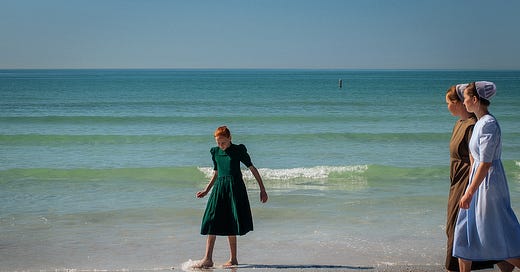



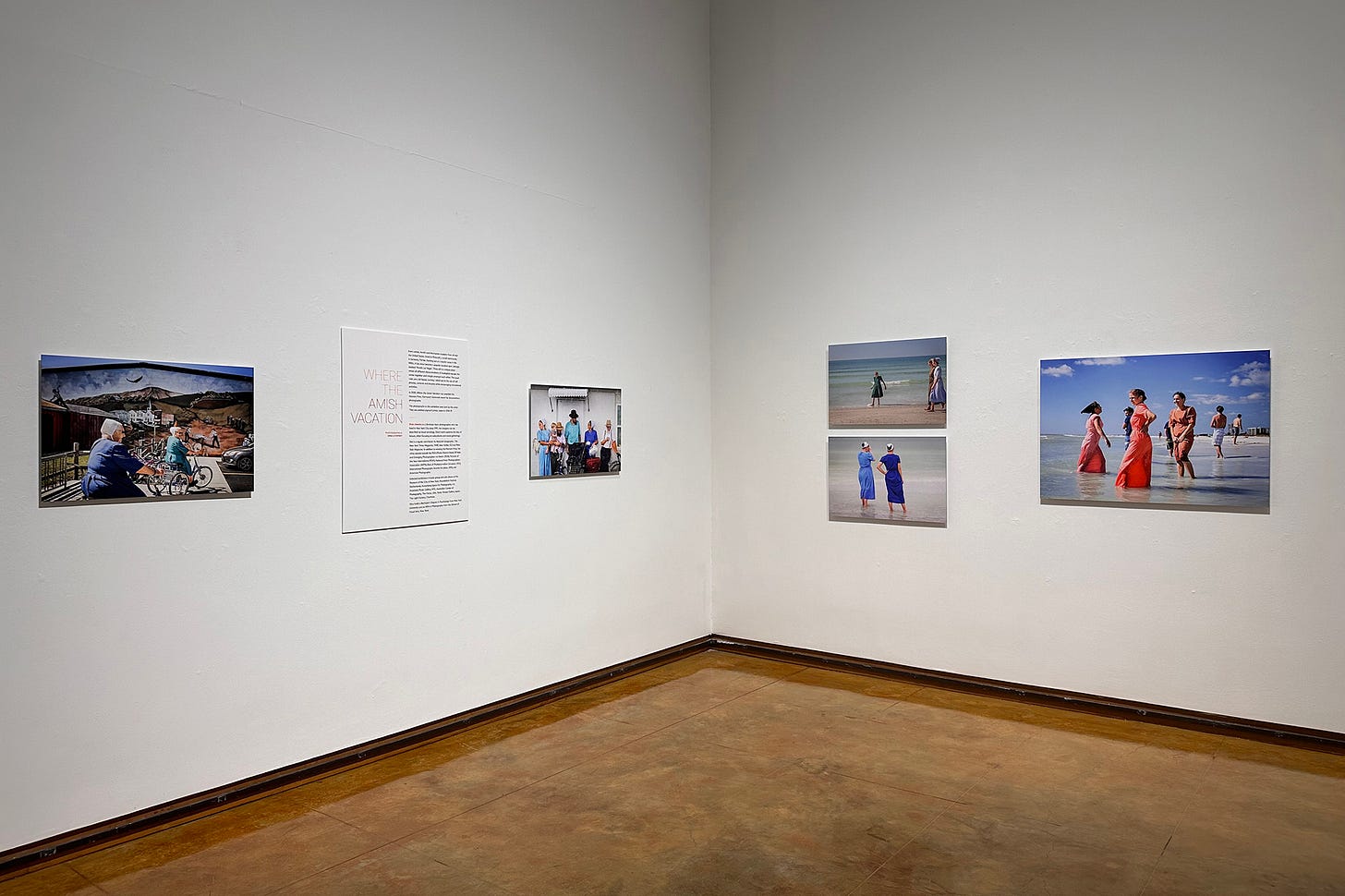
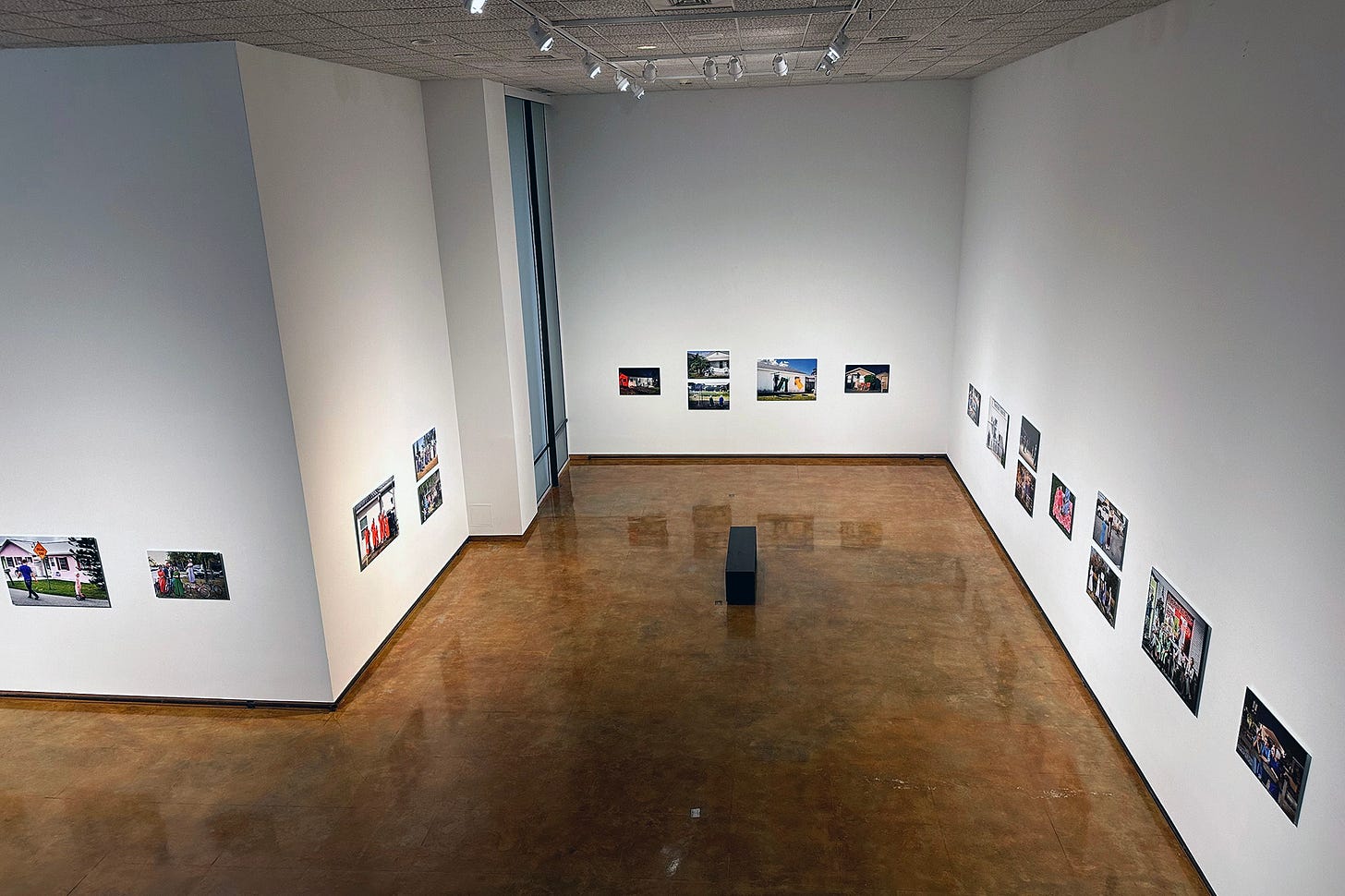
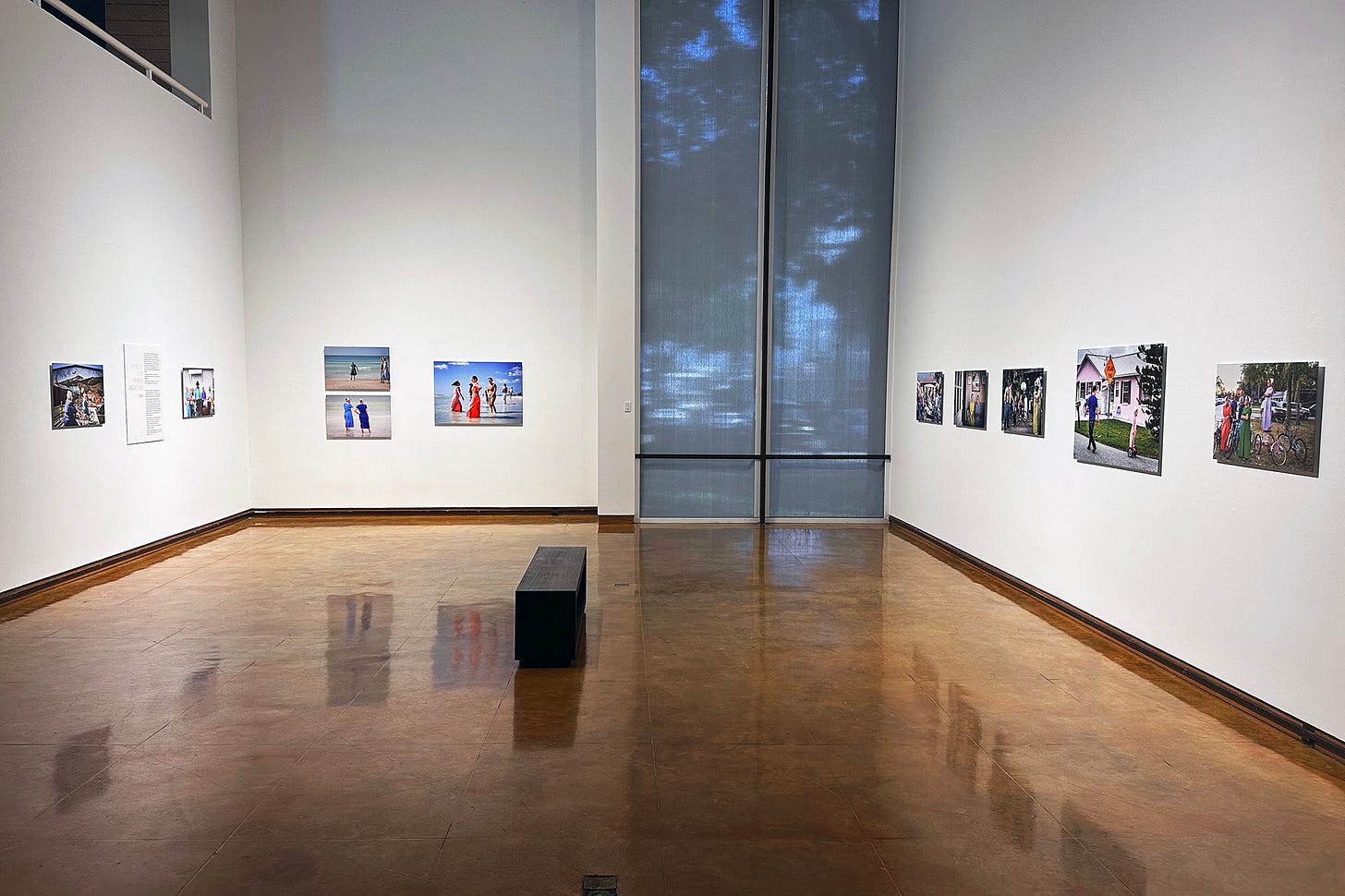
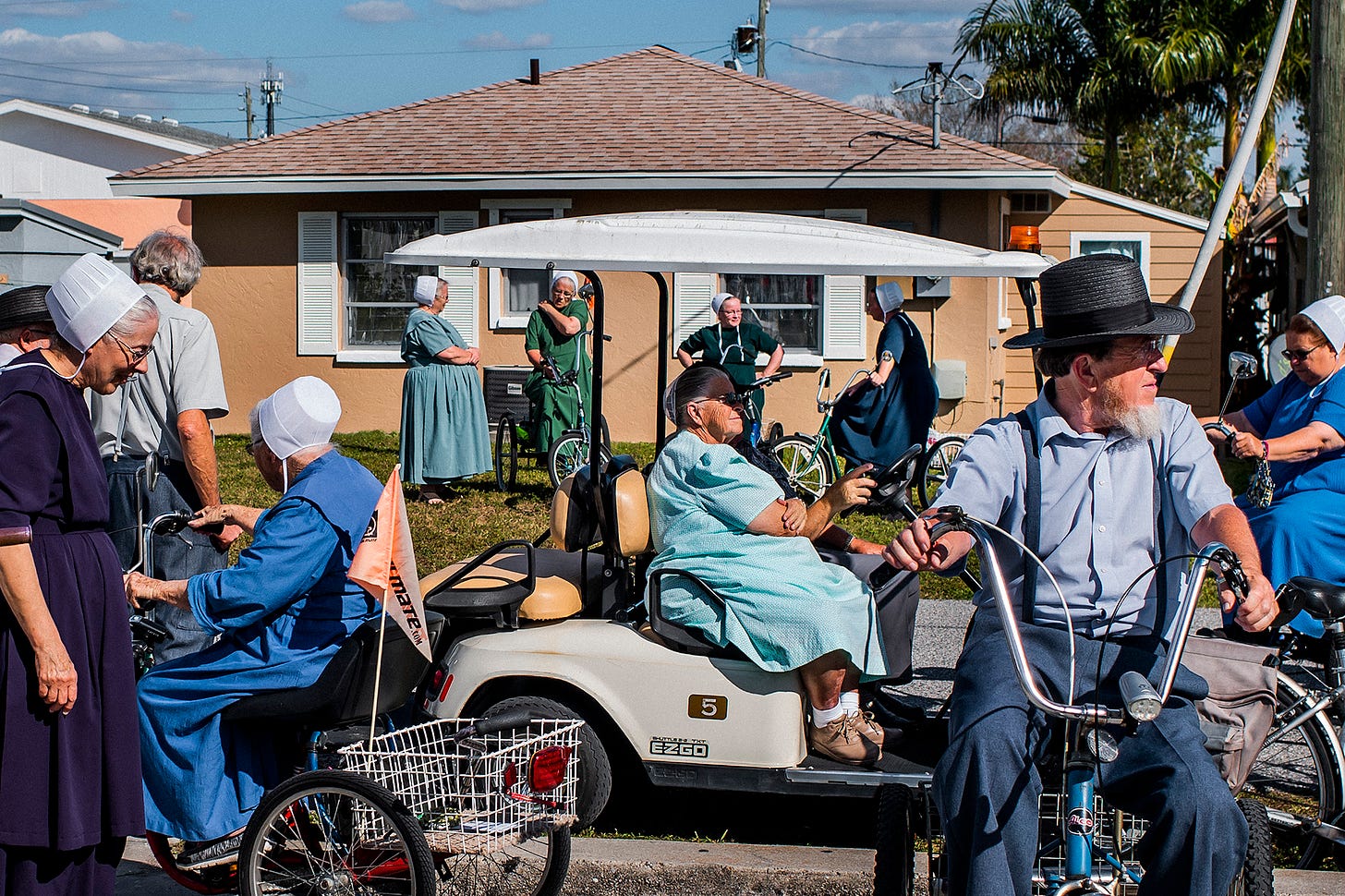
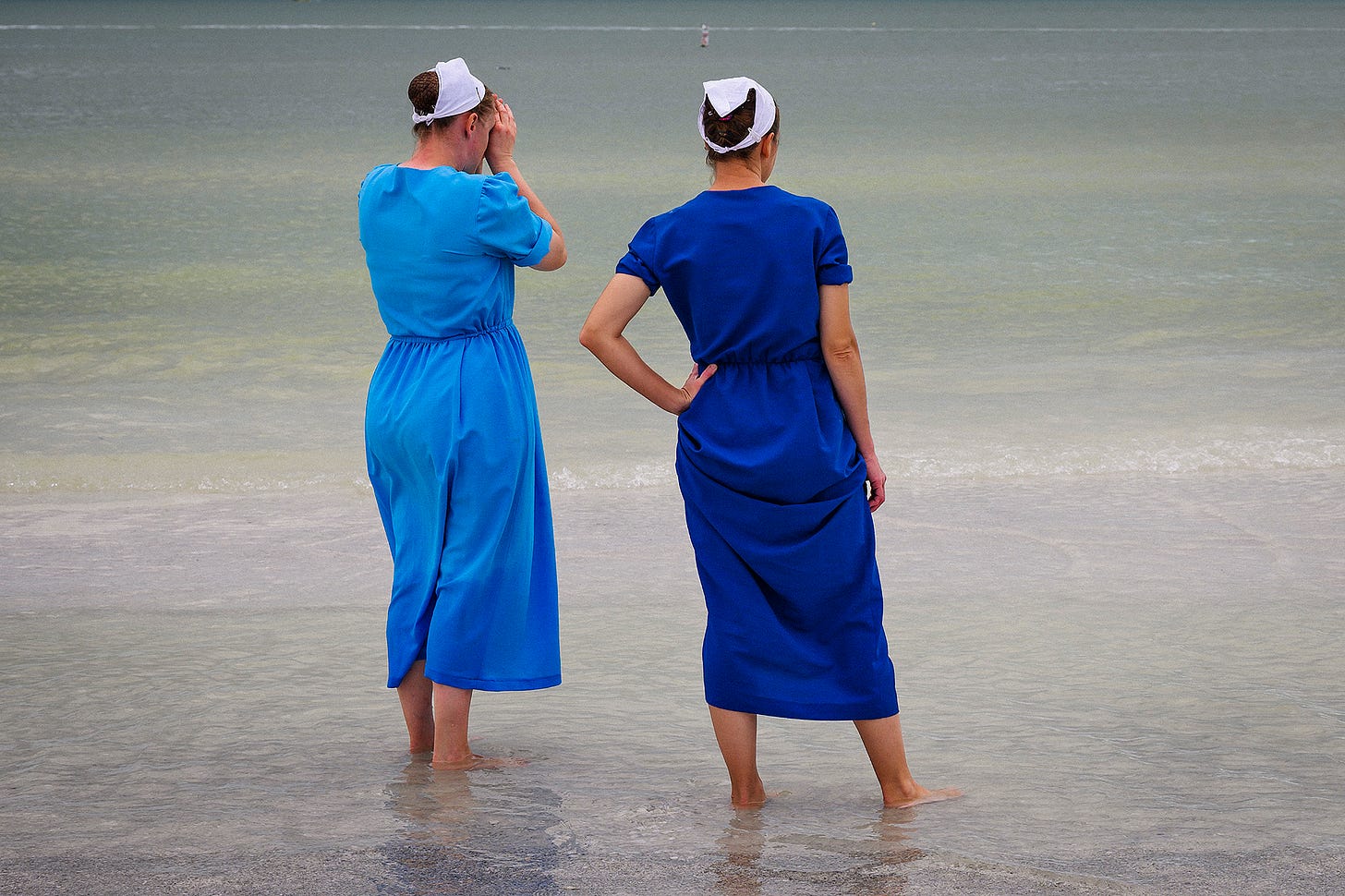
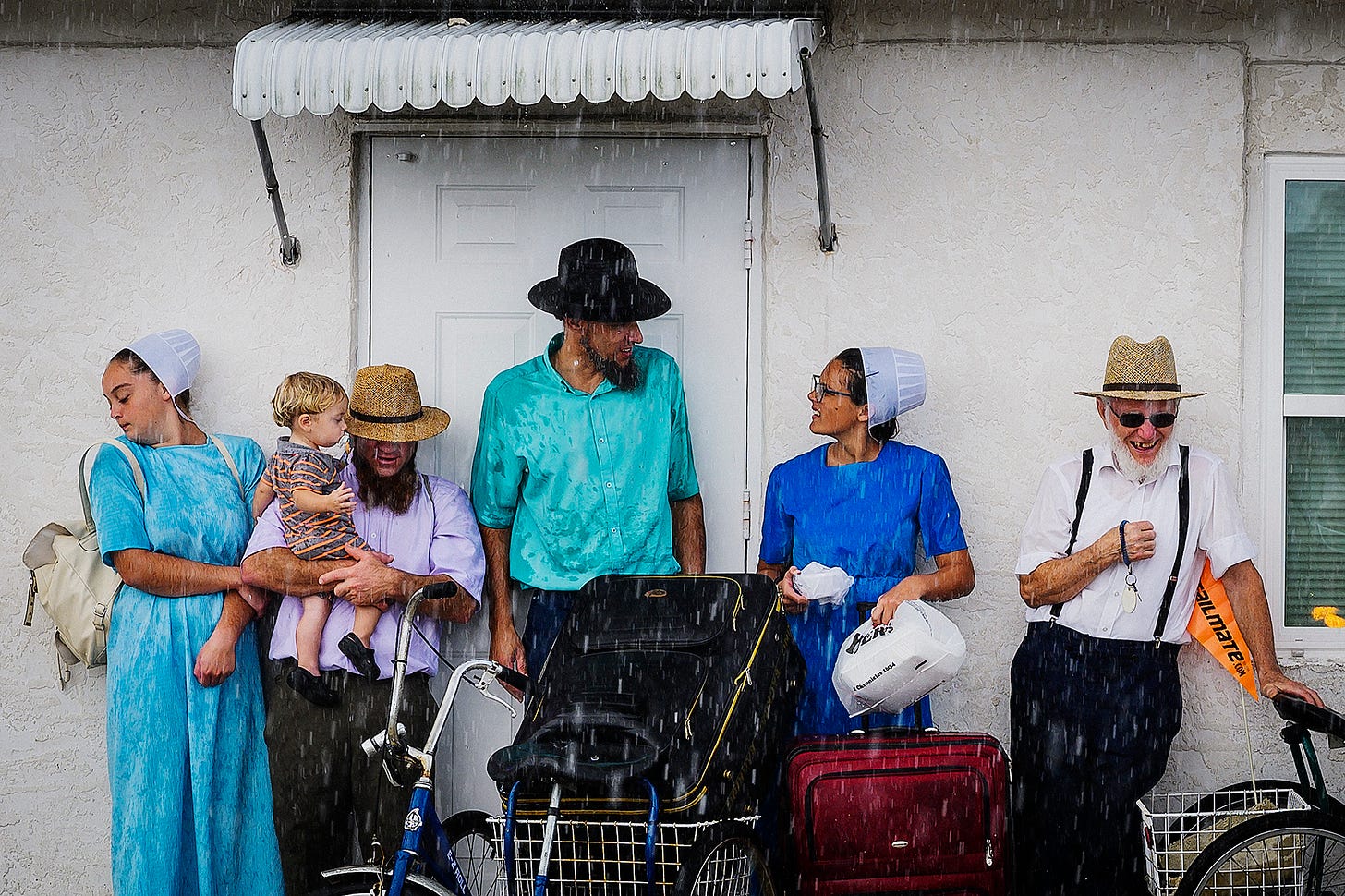
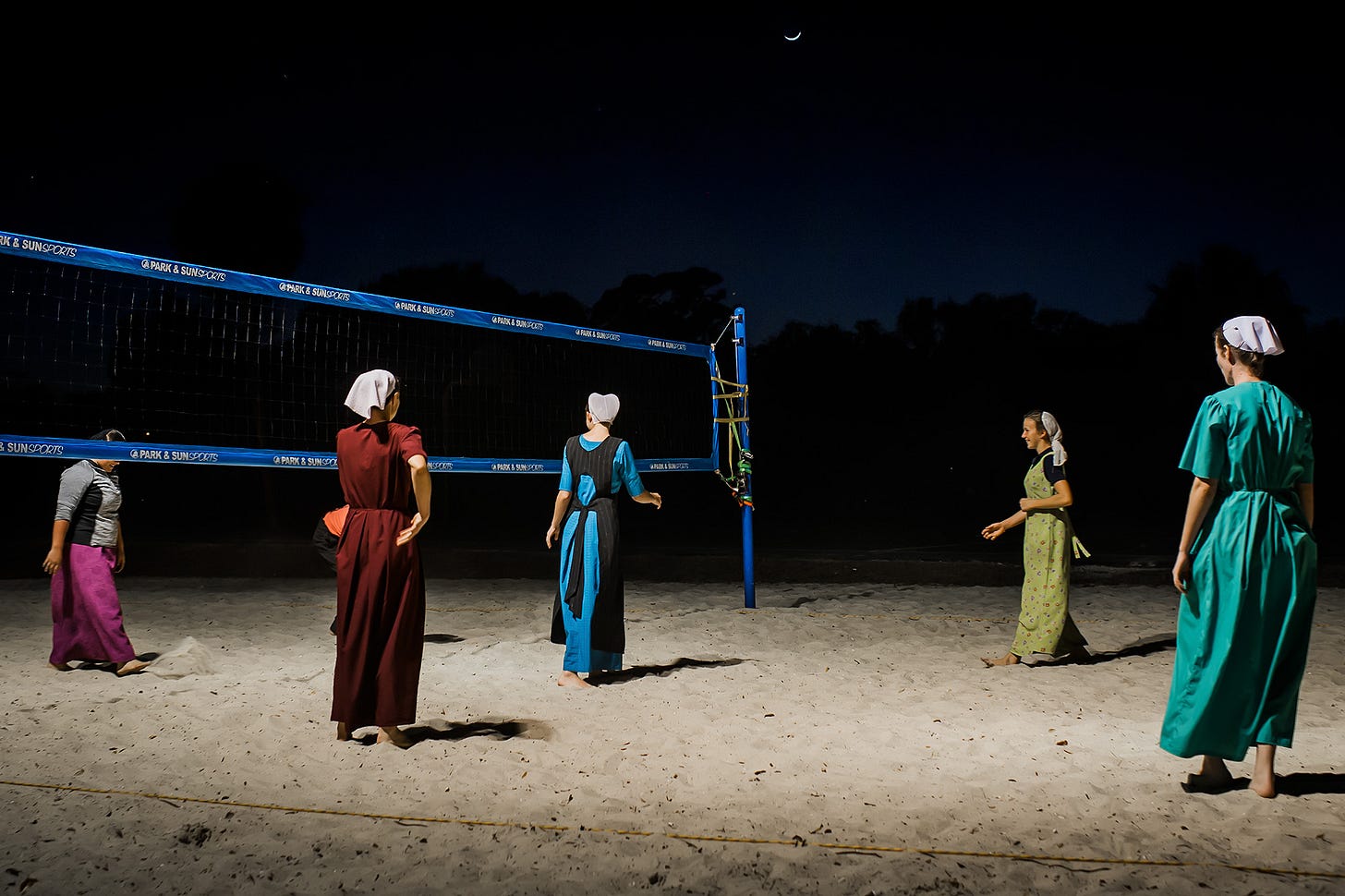
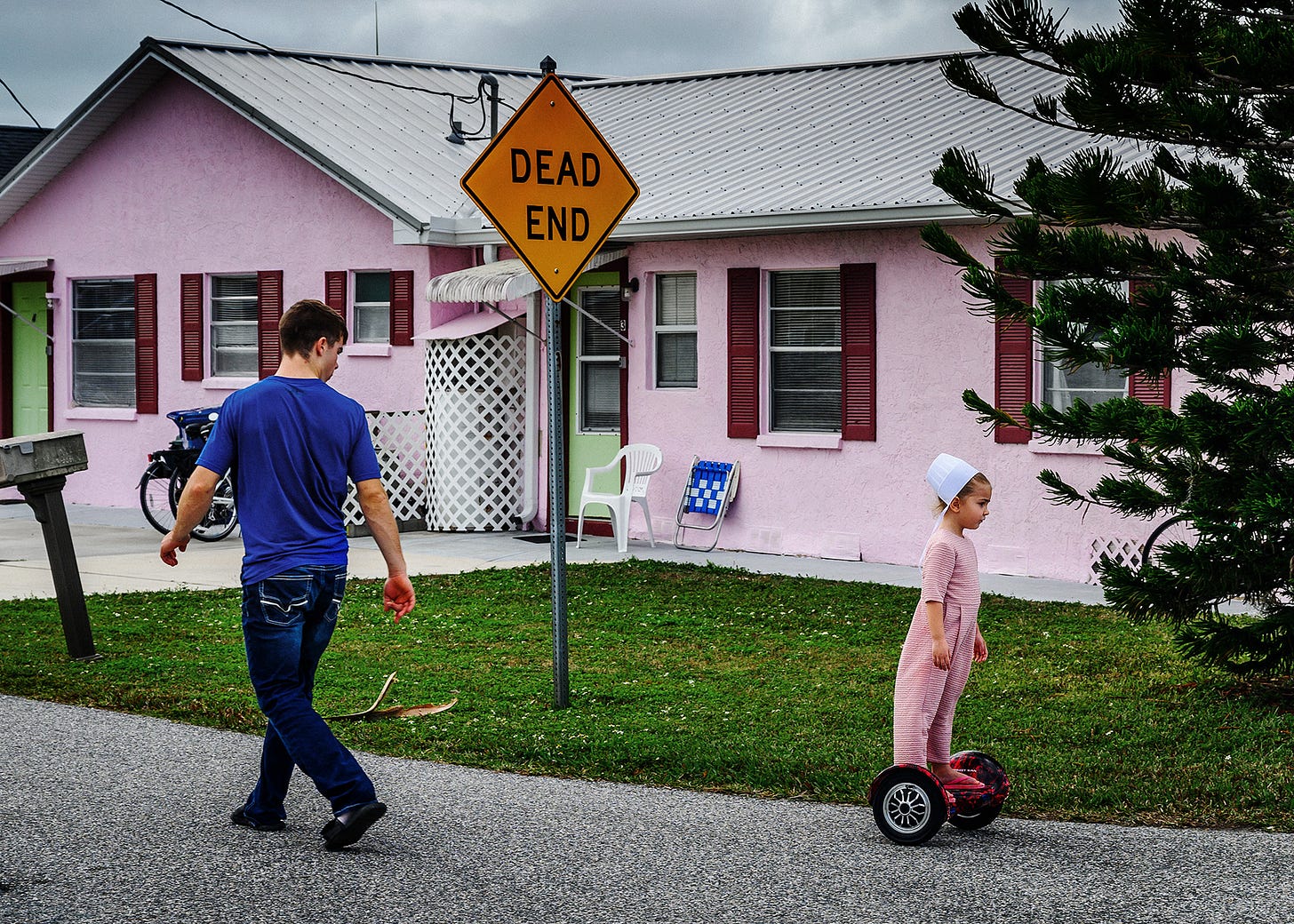
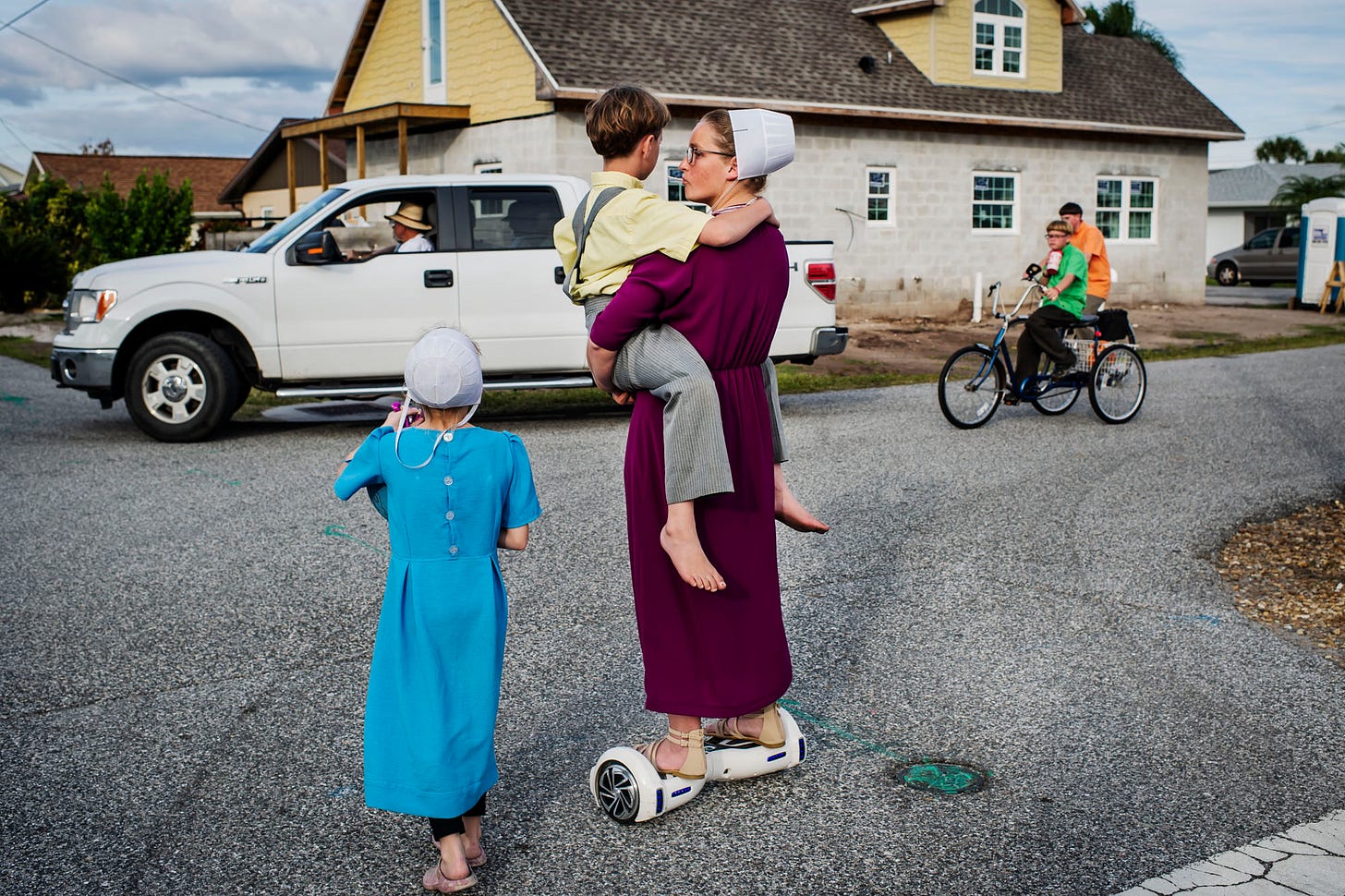
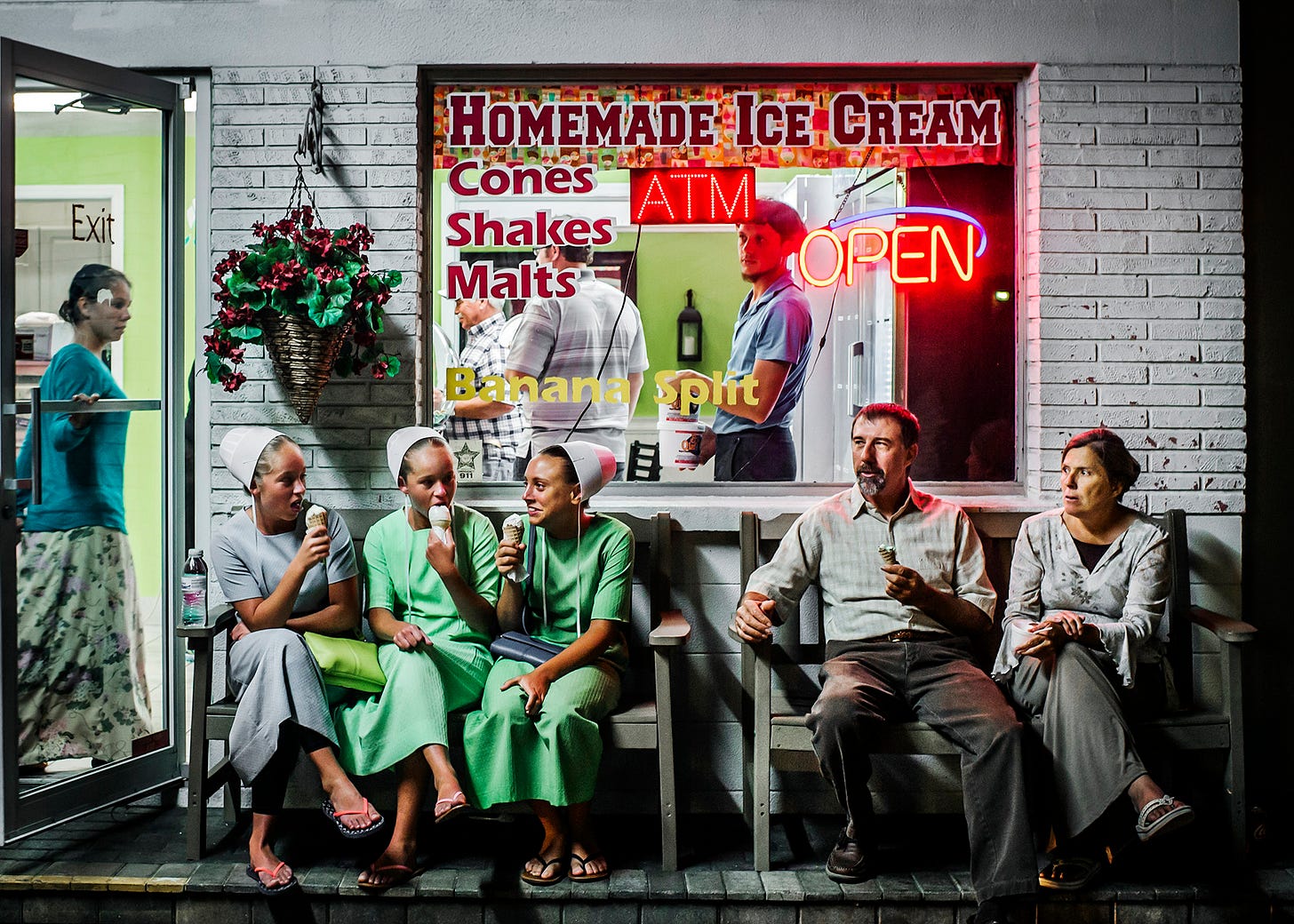
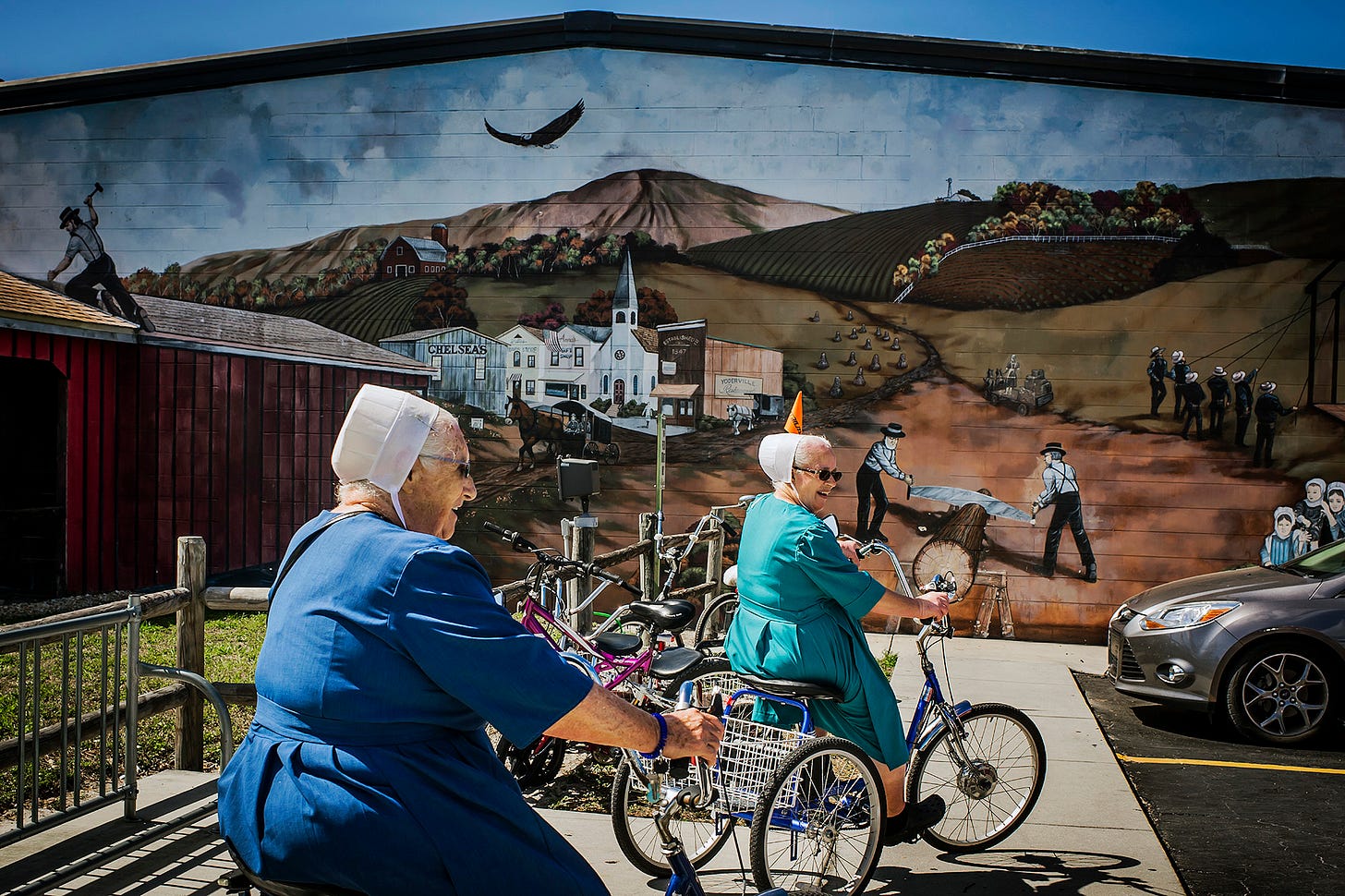
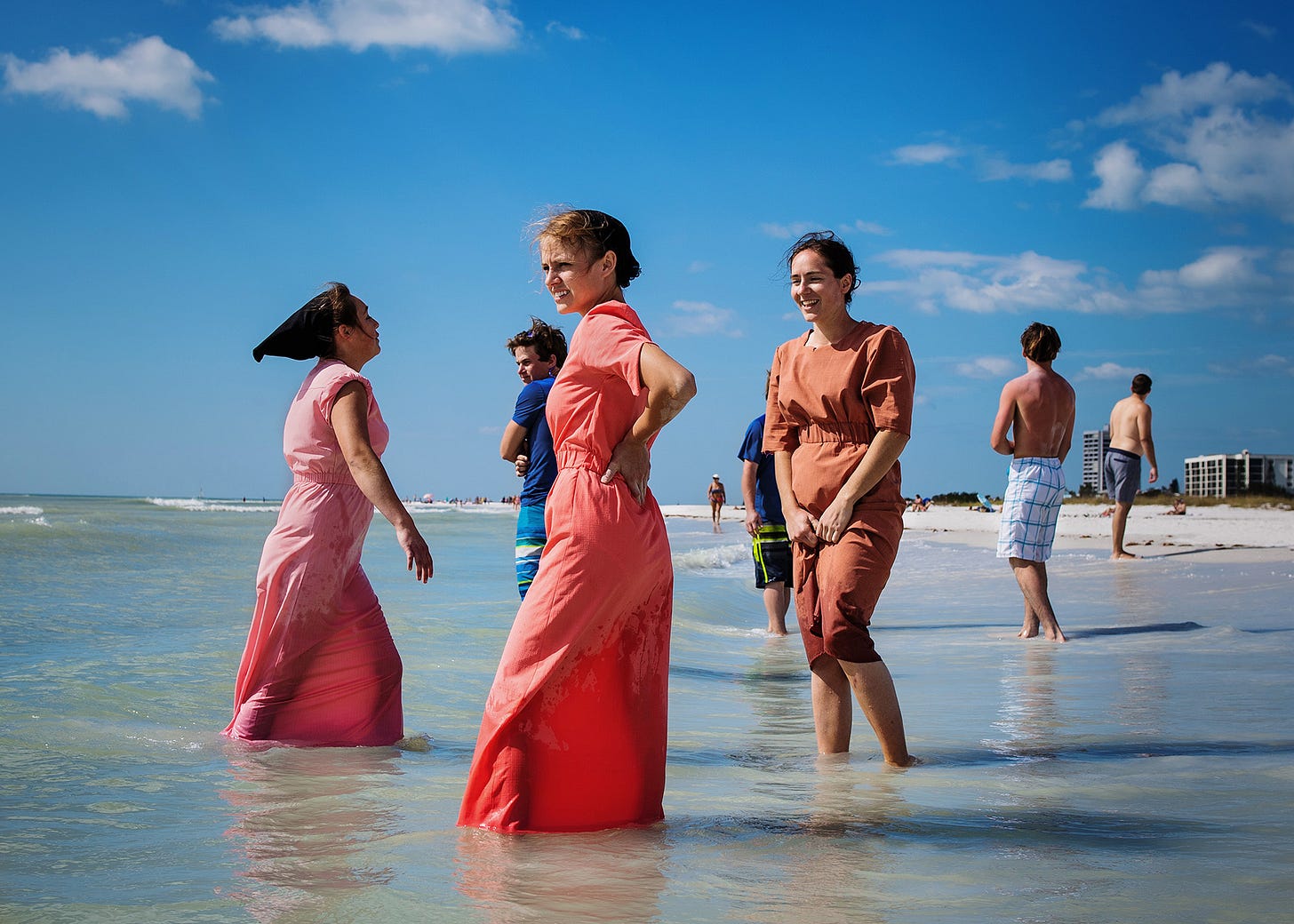

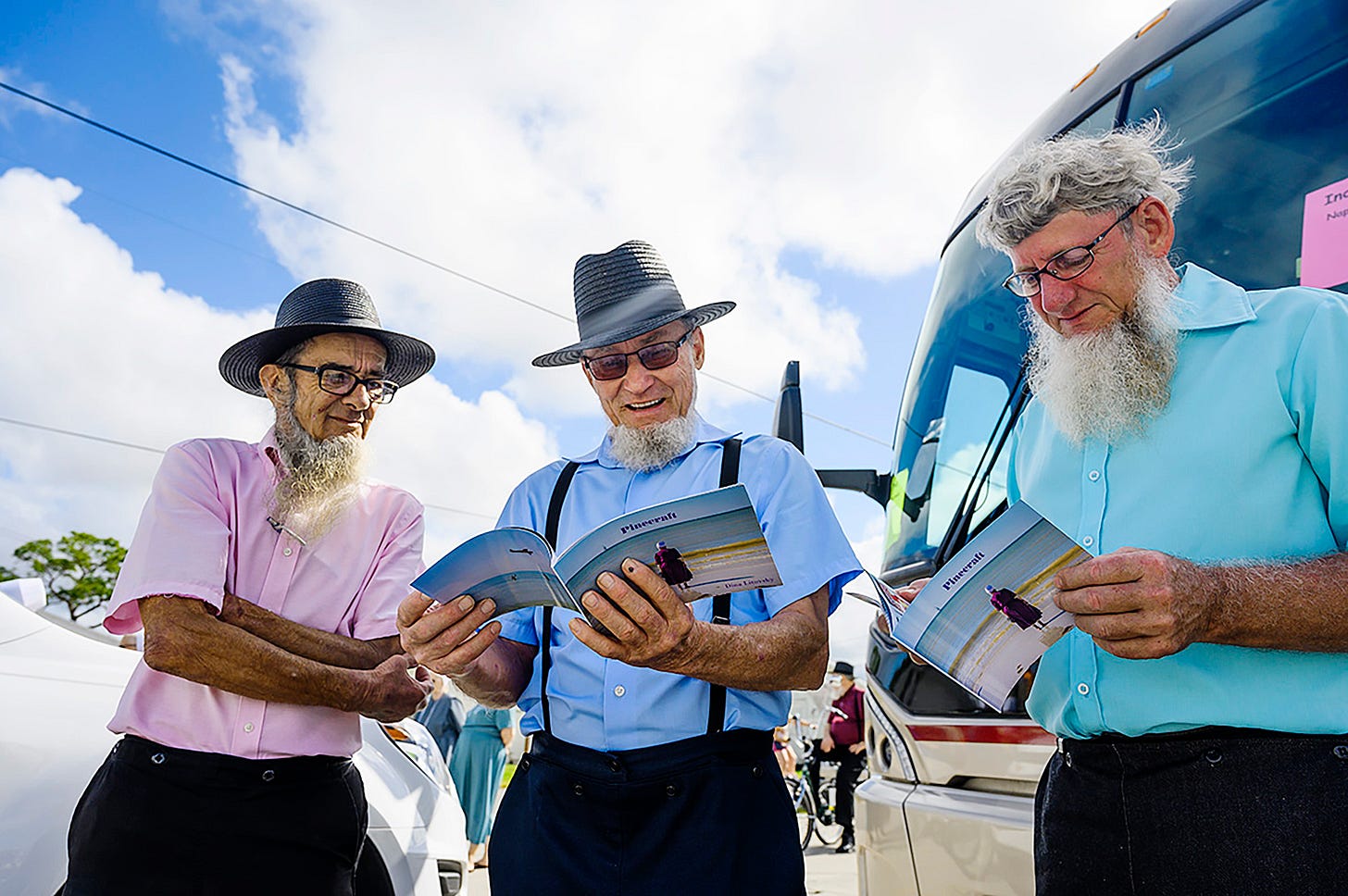
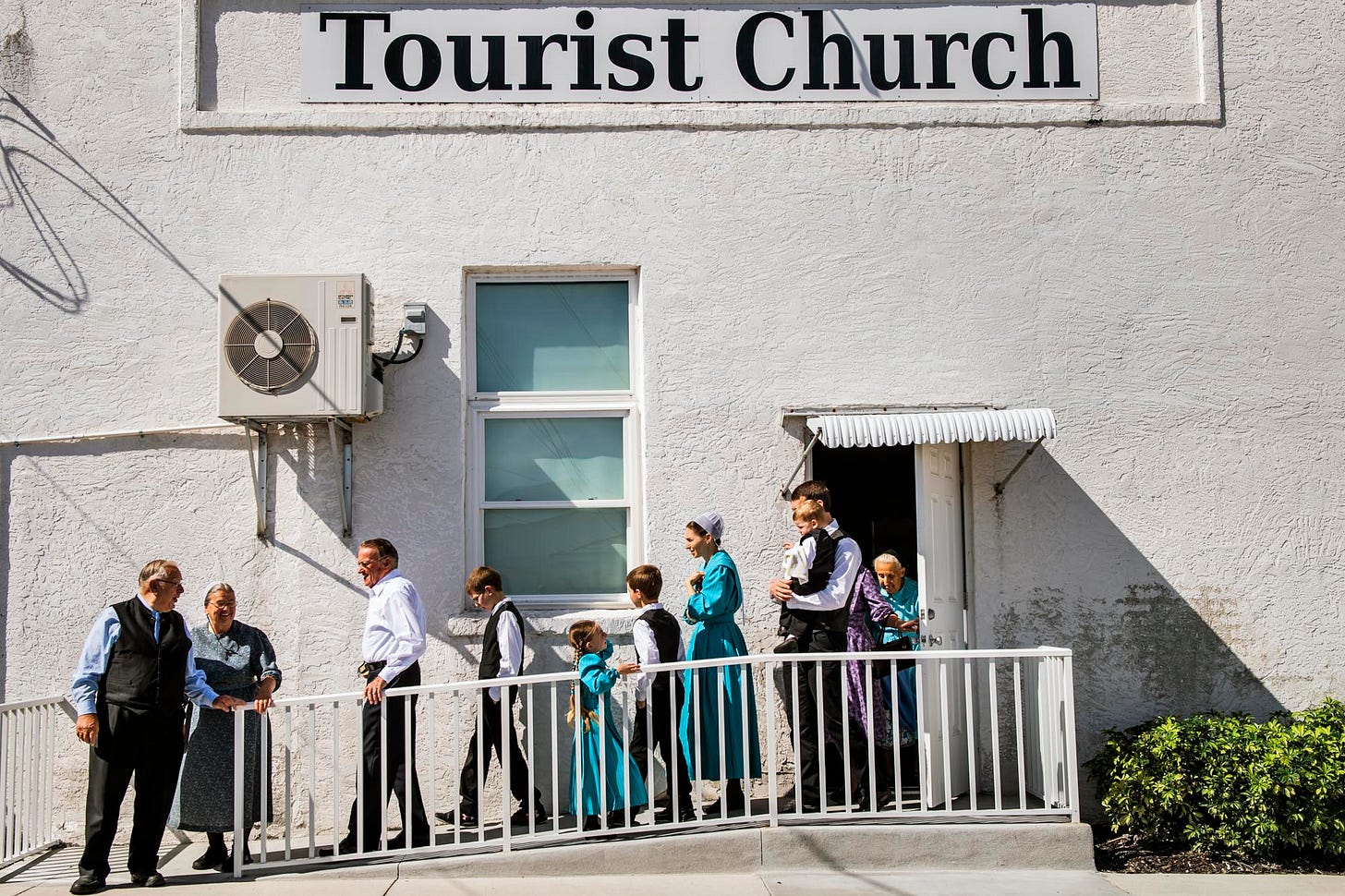
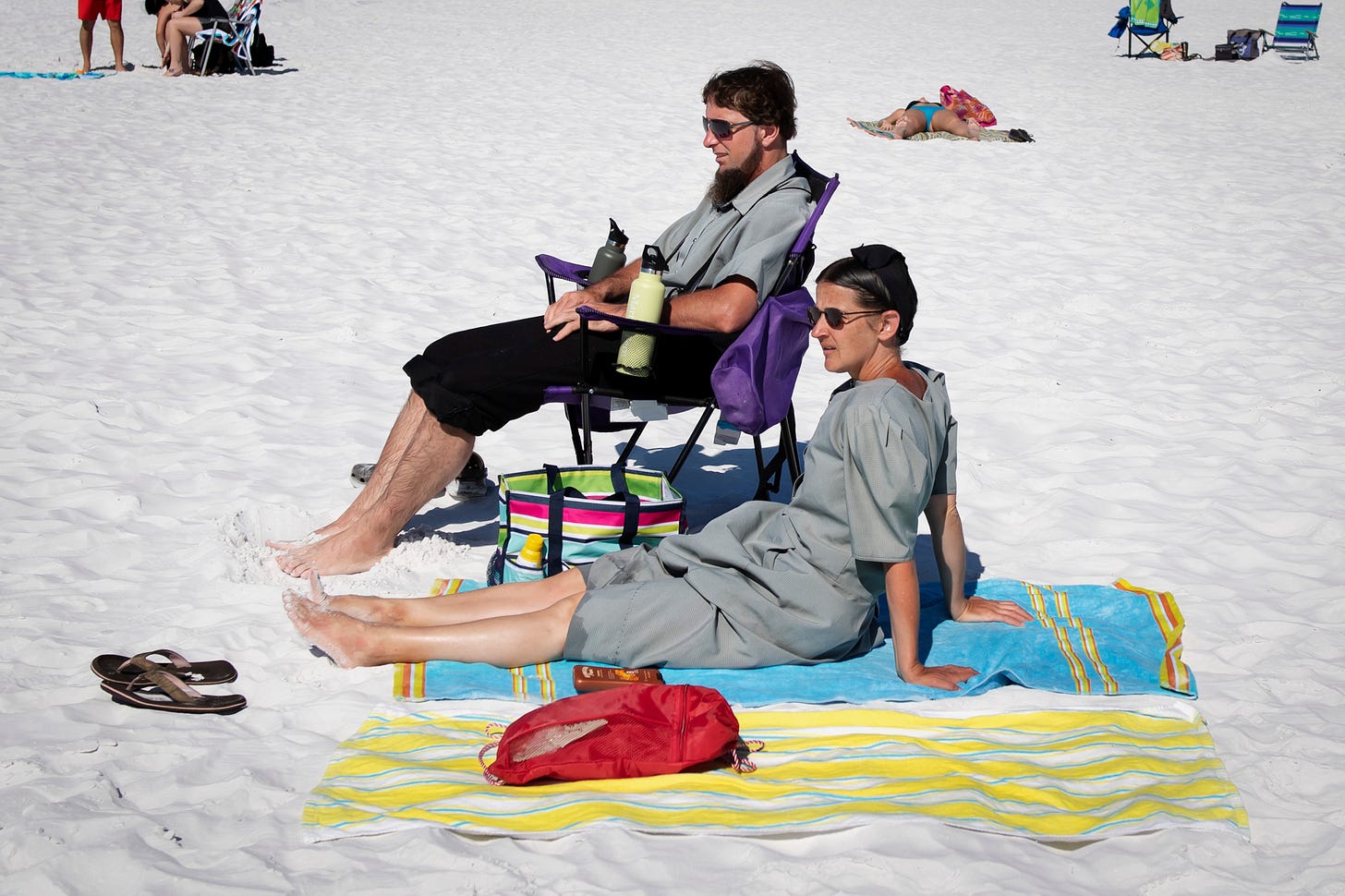
Great read (and great photographs)! I lived in Ontario for many years and would in certain parts of the Province run into areas that were dominated by Mennonites. I never felt they were insular, or indeed necessarily kept to themselves. If you were polite and courteous, they were too. They went about their day, I went about mine. I never dared photograph, but I like your idea that everyone was 'away' and therefore you could find a good way to interact. I like your photographs and your story. I don't know if you know or have heard of, or run into Larry Towell, he is a great friend of the Mennonites and lives among them in Ontario. He is worth checking out, if you have not come across him. He is Magnum, yet, I find him very unlike his colleagues. Easy to get along with and very friendly.
Well done. Nice project!
Refreshing take, great photos. It is so warming to hear the project was well received and the people approached in the right way. Would love to photograph the Hasidic Jews in Vienna with a similar strategy. There, I lived next to playground where both Muslims and Hasidic Jews hung out.